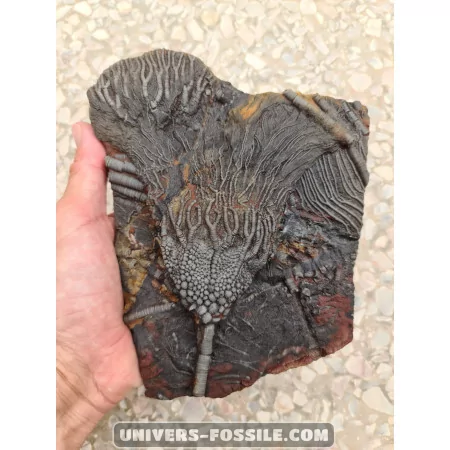Crinoid: An Ancient Marine Creature with a Rich Evolutionary History

Welcome to the World of Crinoids
Discover the intriguing world of Crinoid, also known as "sea lilies," fascinating marine creatures that thrived millions of years ago during the Paleozoic Era.
Structure and Appearance
Fossil crinoids exhibit diverse forms, often resembling plants. They feature a calcareous stem or "column" anchored to the seafloor, branching out into arms that were vital for capturing food particles from the water.
Size Variation
These ancient creatures varied greatly in size, ranging from a few centimeters to several meters in length, showcasing the diversity within the crinoid species.
Habitat and Location
Crinoids populated ancient shallow seas, leaving behind their fossilized remains in sedimentary rocks that originated from marine deposits, offering us a glimpse into their past habitats.
Fossil Composition
The most commonly preserved parts of crinoids are their calcareous ossicles, forming the stem and arms. These intricate structures are often well-preserved, allowing us to study the ancient sea life in detail.
Lifestyle Insights
As predominantly sessile organisms, adult crinoids were attached to the seafloor, while some juveniles were mobile. Understanding their lifestyle sheds light on their evolutionary journey.
Evolution and Legacy
With a history spanning millions of years, crinoids hold valuable insights into the evolution of marine life, showcasing the enduring legacy of these enigmatic creatures.
